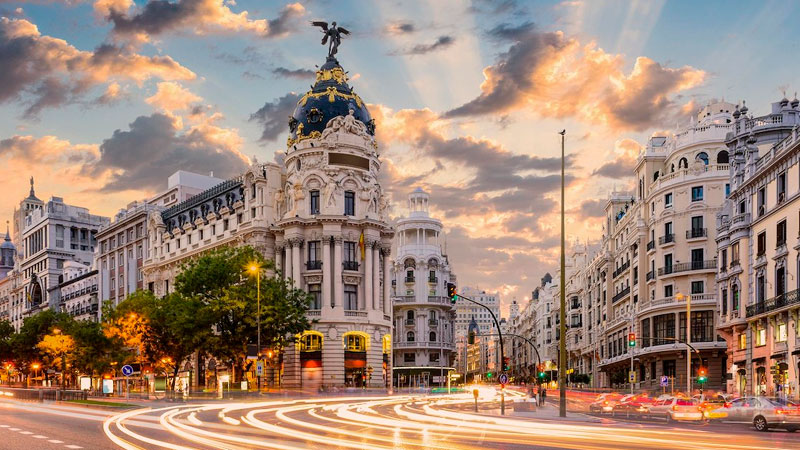Spain works well not only as a vacation destination, but also for city breaks. Madrid occupies a prominent place in the ranking of the most interesting Spanish cities. Its rich and diverse offer will appeal to lovers of history, art, sports, gastronomy and architecture. Discover what is worth seeing there.
Madrid is not only the largest city in Spain, but also the second largest metropolis in the European Union and the second richest center in Europe. It is also the political, economic and cultural center of the country. Many prestigious organizations and institutions have their headquarters here, including the famous Prado Museum. Even this brief description may suggest that Madrid is a unique place on the world map.
Its tourist potential is equally interesting. Numerous squares, parks, museums, representative streets, sports facilities and monuments invite you to discover Madrid and get to know its different faces. There are so many of them that a short weekend trip may not be enough to explore all the attractions. However, there are no obstacles to come back here!
For those visiting Madrid for the first time, it is worth recommending some monuments that are hallmarks of the capital. One of them is undoubtedly the Royal Palace. It is one of the most important monuments in the country and one of the largest buildings of its kind in Europe.
The palace was built in the 18th century in baroque style, while the interiors are decorated in rococo and classicist style. Today, the royal family does not live in this impressive building.
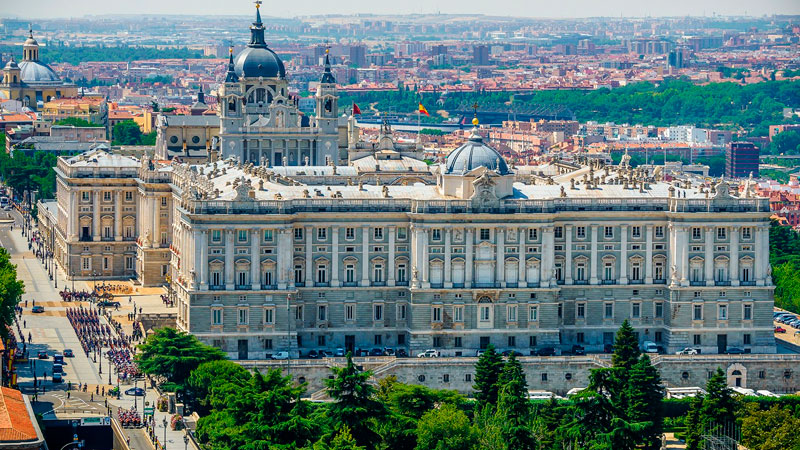
The building serves representative functions and is open to visitors. The Throne Room, the Hall of the Column and the royal chambers made with great craftsmanship and splendor make a great impression. They are decorated with works by Caravaggio, El Greco, Rubens. Another attraction is the Royal Armory with a large collection of weapons and armor, and the Sabatini Garden adjacent to the palace, built in the French style.
When visiting Madrid, it is impossible not to visit two of the most famous squares: Puerta del Sol and Plaza Central. The first has an oval shape and is surrounded by tenement houses of the eighteenth century. The square has a special meaning. The statue of a bear eating wild strawberries located in the square is a favorite meeting point for the inhabitants of the capital. It is obligatory for them to gather here on December 31 to celebrate the arrival of the New Year. The uniqueness of Puerta del Sol, however, is determined by the fact that there is a point from which all distances and main roads in the country are measured. Kilometer zero is marked by a cobblestone in front of the clock tower.
The Plaza de Armas is located near the Puerta del Sol. The square was built in the 17th century, during the reign of King Philip III (his statue is located in the square). Because of its size and location, it witnessed many important events in the life of the city, including the coronation and canonization of saints. Over time it became less important and to this day Madrileños still gladly choose it as a meeting place. No wonder, it is extremely charming.
In the buildings surrounding the square, there are numerous restaurants and bars where you can relax after sightseeing and enjoy the atmosphere of this unique place. Once a week, on Sundays, collectors' fairs are held there, which is a good opportunity to buy interesting souvenirs. The Mercado De San Miguel market is located near the square - probably the most famous food market in Madrid. Lovers of Spanish cuisine should definitely visit it. You can buy tasty specialties at numerous stalls.
The above squares are just two of the many squares in the city. Also worth a visit is the Plaza de España with the statue of Miguel Cervantes and enclosed on two sides by skyscrapers, and the Plaza de Cibeles with the famous fountain of the goddess Cibeles sitting on a carriage pulled by lions.
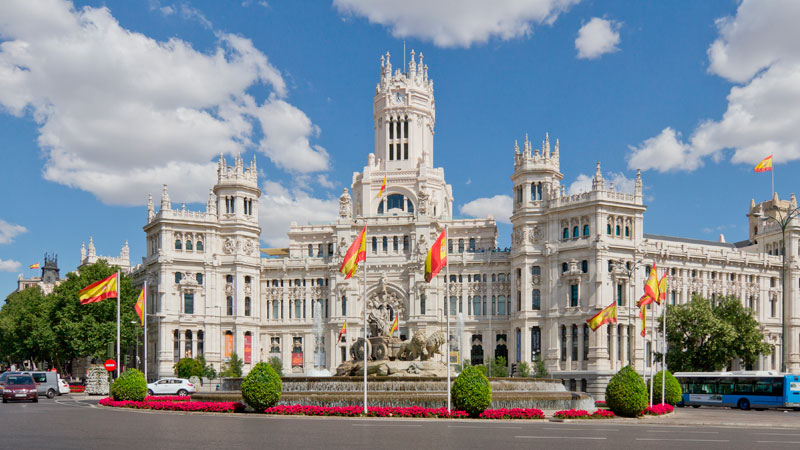
In the square there is a building of the old post office, Palacio de Comunicaciones, today occupied by the town hall. On the top floor there is a belvedere from which you can enjoy views of the bustling surroundings of the square.
In the city of art
From the Plaza de Cibeles it is close to the Paseo del Prado around which the so-called El Triángulo del Arte, or three world-class art museums, is developed. The first is the aforementioned Prado Museum. Today, the facility boasts more than 3.5 thousand exhibits. It contains, among others, works of Spanish painting, from Romanesque to contemporary art, as well as large collections of Italian, Flemish and French painting.
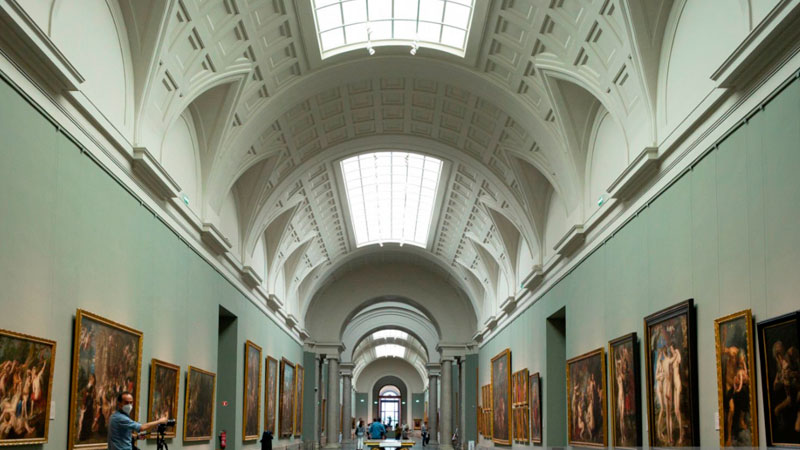
There are also sculptures, engravings and drawings, as well as artistic craftsmanship of the most eminent artists, to mention Titian, El Greco, Pablo Picasso, Bosch. It takes at least a day to see them all! The art triangle is completed by the Thyssen-Bornemisza Museum, which presents a collection of European painting from the 13th to the 20th centuries, and Museo Nacional Centro de Arte Reina Sofía.
The latter facility is housed in the 18th century building of the former Hospital Principal. It features collections of contemporary Spanish art, including Pablo Picasso, Salvador Dalí and Joan Miró, but not only. You can also find there works by artists of other nationalities.
The range of museums in Madrid is much wider. Those interested in learning about the history of Madrid, including the daily life of its inhabitants, can recommend the National Archaeological Museum, the Museum of the Origins of Madrid, the Museum of the History of Madrid and the Museum of Costume.
A unique institution is the Cerralbo Museum, which presents private collections of art and archaeological artifacts belonging to the aristocratic Cerralbo family. A visit to the palace where the museum is located is a fascinating journey into the past! Similar feelings will accompany a trip to the Convent of the Clarisas de las Descalzas Reales.
The palace, which now houses the monastery, was inhabited by the royal couple: Charles V and Isabella of Portugal. Their daughter Joanna founded a convent of Discalced Franciscans in the mid-16th century. Many of the nuns who joined brought with them endowments in the form of tapestries, paintings and religious images. Today they are open to tourists to view.
Speaking of sacred buildings, Madrid is not to be missed either. The Cathedral of Nuestra Señora de la Almudena, which is the main Roman Catholic temple in the city, is especially worth seeing. Its construction lasted a hundred years, until 1993. It was built in neo-Gothic style. The interiors are decorated with altars dedicated to contemporary saints.
Among the important religious buildings of the city, a special place is occupied by a rather inconspicuous attraction: Debod, an Egyptian temple of the second century BC The temple dedicated to the gods Amun and Isis was donated to Spain in 1968 by the Egyptian authorities. as a thank you for helping to save ancient monuments. Today, tourists visiting the facility located in the Parque de la Montaña, next to the Manzanares River, can admire the temple's two gates and the chapel decorated with reliefs. The temple offers a beautiful view of the city.
In the city of parks
Madrid's attractions are also its parks, which tourists appreciate especially during the summer months. There are many parks in the capital, about forty, and each one is different. The most popular is the Retiro Park, located near the Art Triangle and next to the prestigious neighborhood of Los Jeronimos. In 120 ha, tourists will easily find a place to rest after the hardships of tourism.
There are also several attractions. The focal point of the park is the pond, to which the park's alleys lead. In one of them stands out a characteristic semicircular colonnade with a monument to King Alfonso XII. In the park you can also admire historic fountains and, above all, various species of plants, such as roses, azaleas and the Mexican cypress, considered the oldest tree in the city.
For sports fans
When talking about the Spanish capital, one cannot forget its sporting side. Soccer fans associate the metropolis mainly with two famous clubs: Real Madrid and Atletico Madrid. When visiting the capital, they cannot refuse to visit the facilities where their beloved teams play.
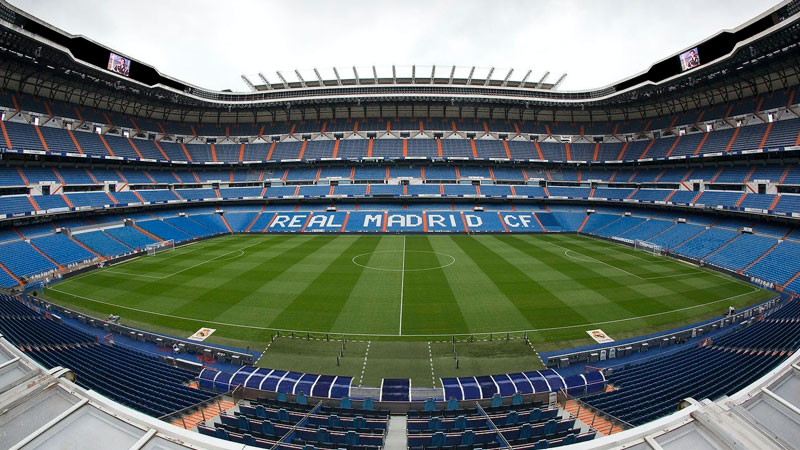
The Santiago Bernabeu, the stadium of Real Madrid (here are also played the matches of the Spanish national team), and the Wanda Metropolitano, the stadium of Atletico, are available for tourists.
Not only will you be able to see what the facilities of these stadiums are like, but also learn about the history of both teams. There are museums dedicated to the soccer clubs in the stadiums.
